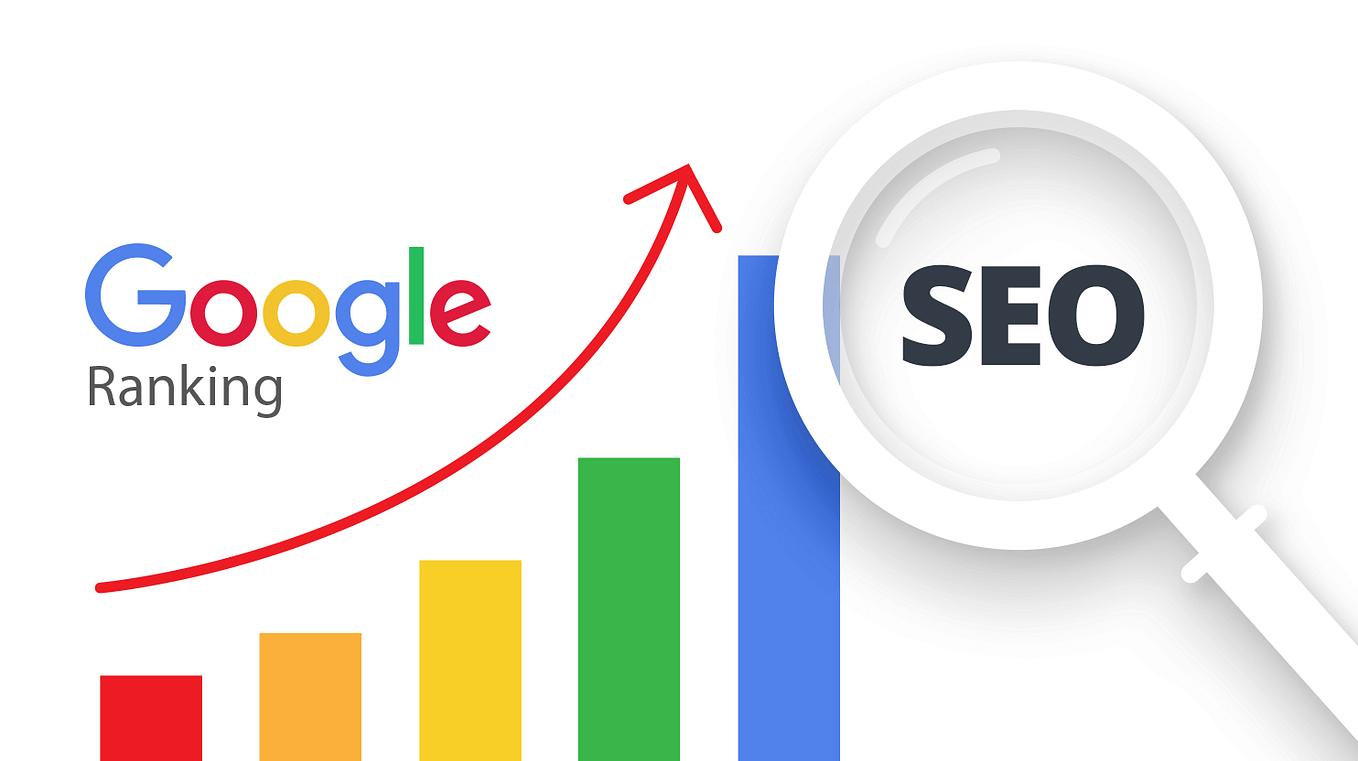If you’ve poured time, effort, and money into building a website but it’s still buried on page two or beyond, you’re not alone. According to SEO experts, 97% of all webpages receive zero traffic from Google. That means millions of businesses are struggling to show up—even for basic search terms related to their services.
But why does this happen? And more importantly, what can you do to fix it?
This blog explores the most common reasons why websites fail to rank and gives you clear, actionable steps to improve your chances of showing up on Google’s first page. Whether you’re a business owner, marketer, or blogger, these insights are backed by real-world testing, expert strategies, and Google’s own clues about how rankings work.
1. You’re Not Matching What Searchers Want (Search Intent Mismatch)

One of the biggest reasons websites don’t rank is because they don’t match what people are actually looking for. This is called a search intent mismatch.
Let’s say someone searches for “best smartphone under ₹20,000.” They’re clearly looking for a list or comparison guide. If your page is just a product page selling a single phone, Google sees it as a poor match—even if your content is well-written.
To rank well, your page must fully align with the intent behind the search. That means:
- Look at what’s already ranking: Type your keyword in Google and see what type of content shows up. Is it a blog, listicle, product page, or how-to guide?
- Identify the dominant format and angle: Are the top results reviews, tutorials, or buying guides? Match this format.
- Update your content accordingly: If your page isn’t aligned with the top-ranking results, rewrite it to better match what searchers expect.
For example, if you’re trying to rank for “how to improve website speed,” your content should include actionable steps, tools, and screenshots—not just general advice.
Fix It Tip: Spend 10 minutes Googling your target keyword. Compare your content format and angle with the top 5 results. If your page looks different from all of them, it’s time for a content refresh.
2. Your Content Isn’t Good Enough (Even If It’s Long)

Many people think that writing a long blog post automatically means better rankings. But Google doesn’t reward length—it rewards usefulness.
If your content is vague, outdated, or misses key points that readers care about, it won’t rank—no matter how many words it has.
Google’s job is to show the most helpful content for a search. So, your content needs to:
- Cover the topic completely: If you’re writing about “how to start a blog,” don’t just mention domain names and hosting. Talk about platforms, niche selection, content planning, promotion strategies, and even SEO basics.
- Provide clear solutions: Google prefers content that answers real questions. Use the “People Also Ask” section to identify what else readers want to know.
- Use helpful formatting: Bullet points, subheadings, images, examples, and step-by-step instructions make your content easier to read and more valuable.
Fix It Tip: Use tools like Ahrefs or Rankability to compare your content with the top-ranking pages. Are you missing topics they’re covering? Update your post to fill the gaps and improve the structure.
Also, remember: quality beats quantity. It’s better to write one highly useful article than five shallow ones.
3. Your On-Page SEO is Weak

Even if your content is helpful and detailed, it still won’t rank if Google can’t understand it properly. That’s where on-page SEO comes in—it helps search engines figure out what your page is about.
Many websites fail to rank simply because they miss basic on-page SEO elements. Here’s what you should focus on:
- URL Structure: Keep it short and include your main keyword. For example, use
/seo-tipsinstead of/page123?ref=xyz. - Title Tag: This is the title that appears on Google. Make sure it includes your main keyword. According to leaked Google documents, “title match score” is a real thing.
- Meta Description: It won’t directly boost rankings, but it increases click-through rates. Write a clear, engaging summary and include your keyword naturally.
- H1 Tag: This is the main heading on your page. Don’t leave it blank or overcomplicated—make it relevant to your topic.
- First Paragraph: Mention your primary keyword early. This helps Google know what the page is about from the start.
- Internal Linking: Link to other related posts or pages on your website. This helps Google crawl your site and improves user experience.
Fix It Tip: Use a browser extension like “Detailed” or an AI tool like Rankability to analyze your page and compare it with top-ranking competitors. Then adjust your content accordingly.
You don’t need to over-optimise—just make it clear, relevant, and structured.
4. Your Website Doesn’t Build Trust with Google

Google doesn’t just look at individual pages—it also looks at your entire website. If your site doesn’t seem trustworthy or focused, it’s less likely to rank, especially for competitive keywords.
Here’s why Google might not trust your site yet:
- Lack of Topical Authority: If you write about everything—from fashion to finance to fitness—Google may not see you as an expert in any single area. Focus your content on one subject or industry.
- Not Enough Supporting Content: You can’t rank with just one or two good pages. Create multiple related articles around a topic, then internally link them to each other and your main page. This builds content clusters, showing Google that you know your niche.
- No or Low-Quality Backlinks: Backlinks are like votes of confidence from other websites. If your competitors have more high-quality backlinks than you, Google might trust their content more.
- No Internal Authority Flow: You might already have pages with strong backlinks, but if they don’t link to your important content, that authority isn’t passed along.
Fix It Tip: Use Google’s “People Also Ask” and keyword research tools to find related questions and topics. Create content around those, and then link them together to form a network of useful, relevant articles.
By doing this, you train Google to see your website as a reliable source in your domain.
5. You’re Not Targeting the Right Keywords

Another common reason your website isn’t ranking is that you’re chasing the wrong keywords. Some keywords are too competitive, while others may not even match what your audience is searching for.
Here’s what could be going wrong:
- High Keyword Difficulty: If you’re trying to rank for broad terms like “SEO” or “shoes,” you’re competing with massive websites. Instead, start with long-tail keywords like “SEO tips for small business” or “best running shoes under ₹5000.”
- Low Search Volume: Some keywords may be easy to rank for—but no one is searching for them. In that case, even if you rank, you won’t get traffic.
- Not Matching Search Intent: As discussed earlier, if your keyword doesn’t align with what the user wants, ranking becomes difficult.
Fix It Tip: Use keyword tools like serp.ts, Ahrefs, or Google Keyword Planner. Check three things:
- Search volume: How many people are searching for it?
- Keyword difficulty: How hard is it to rank?
- Intent: What are users looking for when they search that term?
Start by targeting keywords that have moderate traffic, lower difficulty, and clear intent. As your site grows in authority, you can aim for more competitive terms.
6. Your Website Has Technical SEO Issues

Even if your content and keywords are perfect, your site can still be held back by technical SEO problems. These issues make it hard for Google to find, crawl, or index your pages—meaning your content might not even be considered for ranking.
Here are some common problems:
- Noindex Tags: Sometimes, pages are accidentally marked with a
noindextag, telling Google not to include them in search results. - Blocked by robots.txt: If your site’s robots.txt file blocks important pages, Google won’t be able to access them.
- Slow Page Speed: If your website takes too long to load, both users and Google will lose interest. Fast-loading pages are a ranking factor.
- Not Mobile-Friendly: With most searches happening on phones, Google prioritises mobile-friendly websites.
- Broken Links or Errors: 404 errors, broken images, and redirect chains hurt user experience and SEO.
Fix It Tip: Run a technical audit using free tools like Google Search Console, Screaming Frog, or Semrush. Fix anything flagged under crawl errors, indexing issues, or mobile usability problems. Also, submit your sitemap to Google to make sure it knows which pages to index.
Getting these basics right helps Google understand your site and improves your chances of ranking.
7. You’re Not Building Quality Backlinks
Backlinks—links from other websites to yours—are still one of the most powerful ranking signals for Google. If your competitors have more high-quality backlinks than you, they’re more likely to outrank you, even if your content is good.
But not all backlinks are equal. Google cares about:
- Relevance: Links from sites in your industry or niche carry more weight.
- Authority: A link from a respected news site is more valuable than dozens from low-quality blogs.
- Diversity: Getting backlinks from different sources (not just the same type of sites) builds credibility.
- Context: A link placed naturally within relevant content is better than one in a footer or sidebar.
Fix It Tip:
- Create link-worthy content: Guides, case studies, statistics, and original research often attract natural backlinks.
- Use competitor analysis tools: Platforms like Ahrefs or Semrush can help you identify where your competitors are getting their links from—and how you can reach those same websites.
- Internal links matter too: If you already have strong pages on your site, link them to newer or important content to transfer link equity.
Backlinks take time, but building them consistently can make the difference between being stuck on page two and climbing to the top of page one.
8. You’re Not Giving Google Enough Time
Sometimes, your website isn’t ranking simply because it’s too new—or the page hasn’t had enough time to prove its value to Google. Ranking doesn’t always happen overnight.
Here’s why patience matters:
- New pages take time: Research shows that only about 22% of top 10 Google results were created within the past year. Most high-ranking content has been live for several months or more.
- Google needs to crawl and index your content, compare it with other pages, and observe how users interact with it.
- Consistency matters: Updating your website regularly with high-quality, relevant content helps Google trust your site over time.
Fix It Tip:
- After publishing, submit your URL to Google Search Console for faster indexing.
- Track performance using tools like GSC and wait at least 2–6 months before making major changes—unless you discover a clear issue.
- In the meantime, focus on building topical authority and improving existing content instead of rewriting everything too soon.
Being patient doesn’t mean being passive. Monitor, adjust, and improve—but don’t expect results in a week.
Final Thoughts
If your website isn’t ranking, the problem likely lies in one—or more—of these areas: misaligned content, poor keyword targeting, technical flaws, or a lack of trust signals. The good news is, all of these can be addressed with a little strategy and patience. By creating useful content, optimising your pages properly, and building trust with both users and Google, you’ll be in a much better position to climb the rankings.
Need help figuring out what’s holding your site back? Syscentric Technologies specialises in digital marketing and SEO. Whether it’s technical fixes, content strategy, or keyword research, they help businesses take real steps toward better visibility. Visit https://syscentrictech.com/service/seo/ to get started.





